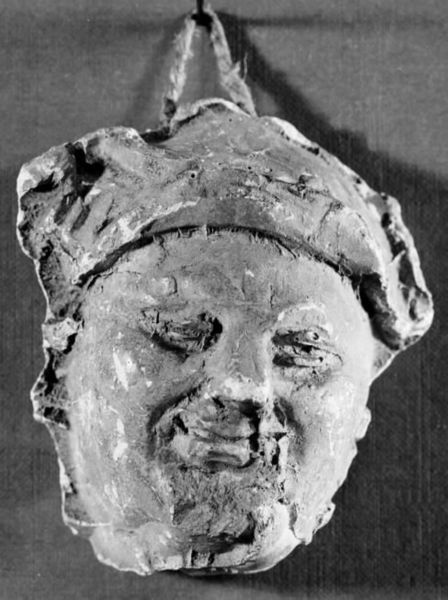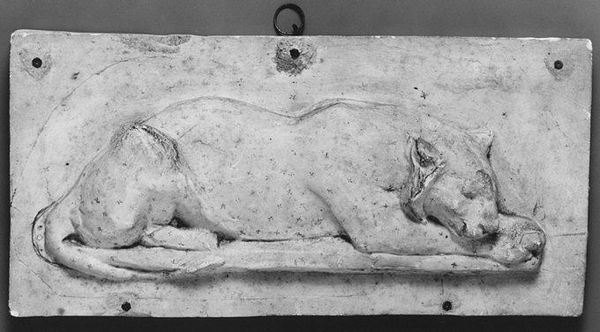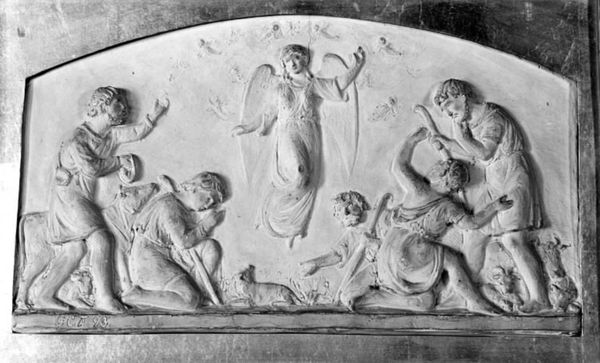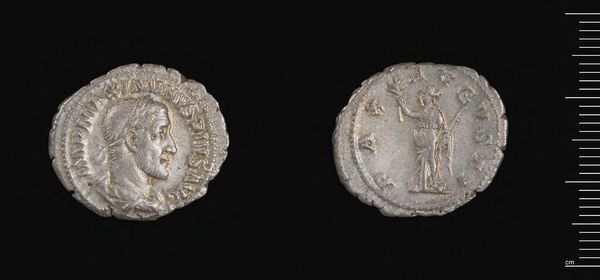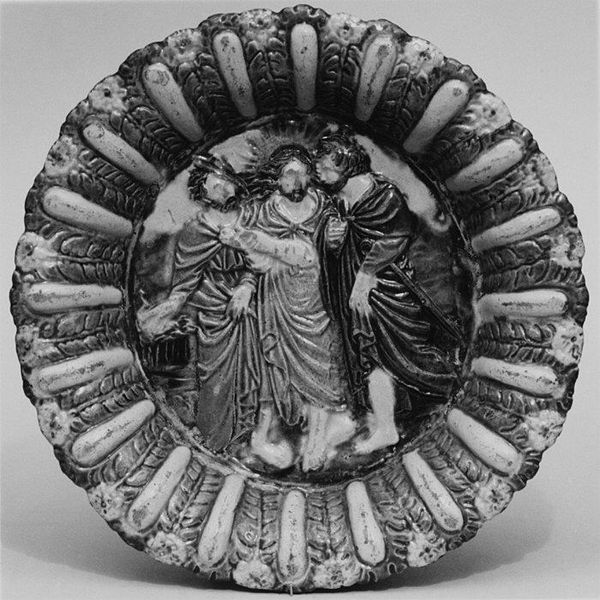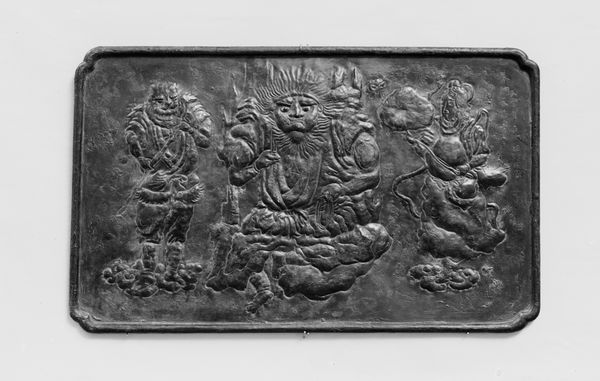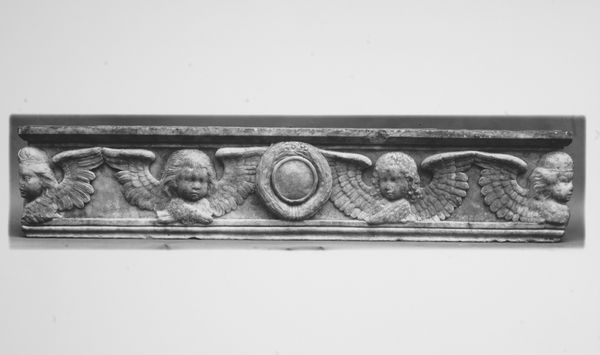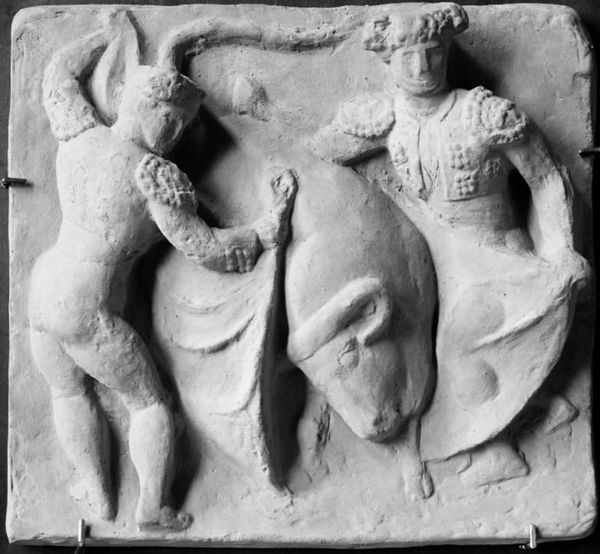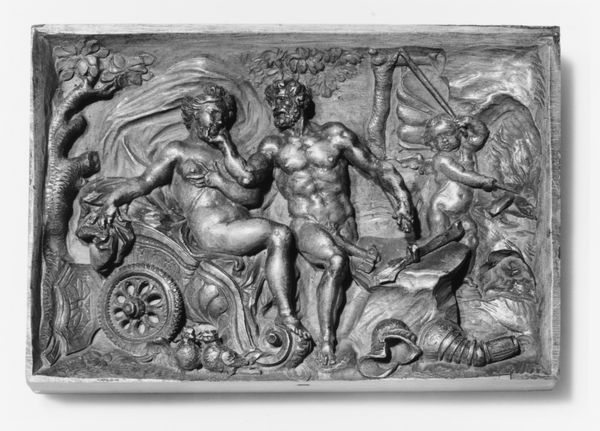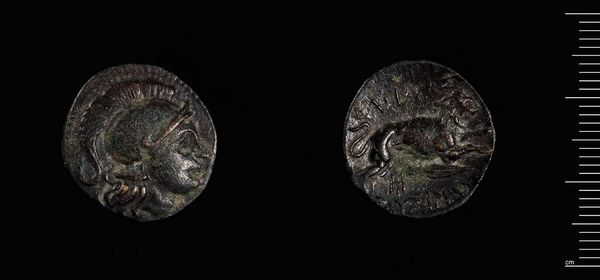
alabaster, relief, sculpture
#
neoclacissism
#
sculpture
#
alabaster
#
relief
#
classical-realism
#
sculpture
#
texture
Dimensions: 7 cm (height) x 16.4 cm (width) x 4.8 cm (depth) (Netto)
Curator: Here we have "En kerub," a relief created in 1836 by Hermann Ernst Freund, crafted from alabaster. Editor: Wow, my first thought? It's haunting. The cherub's face is so... stern, almost melancholy. Definitely not your typical chubby-cheeked angel. Curator: The alabaster really contributes to that, doesn't it? The way the light plays on its surface. We have to remember, Freund was deeply entrenched in Neoclassical ideals, where the emphasis was on a purified, ideal form derived from classical antiquity. So, what we see is a rejection of overly sentimental Baroque styles in favor of what was viewed as a more "serious" artistic approach. The medium itself lends itself to a delicate but precise finish. Alabaster production also involved skilled labor practices rooted in specific quarries and workshops. Editor: Absolutely. You can almost feel the artist's hand at work, coaxing this weighty material into such a refined shape. There is a rawness though, too. It reminds me a little of death masks, that same kind of serene yet unnerving stillness. It's incredible to consider all those hands and processes. You're right: labor, transportation, not to mention the economic realities. What does this particular cherub symbolize given those layers? Curator: Well, we know Freund spent significant time in Rome absorbing classical art firsthand. Cherubs themselves, while common motifs, take on deeper resonance when filtered through this Neoclassical lens. Instead of religious saccharine, Freund imbues the figure with gravitas through simple formal perfection, making reference to artistic conventions that, when looked at critically, challenge standard assumptions about art and artistic output. How Neoclassicism can reveal deeper cultural production models is pretty incredible here. Editor: Makes me think differently about angels generally – beyond their common use. Looking closely, those wings look solid. I am struck, still, by how it hovers in this odd zone. A sort of melancholic beauty mixed with what can't be anything else but an incredible stone-cutting skill set. It defies simple interpretation and really challenges the way one views stone sculpture entirely. Curator: Precisely, the artist sought more than mere decoration. Editor: So true! What a layered and strangely emotive approach! Curator: Indeed, it is through understanding its components, where materials meet the classical form and artistry intersects social contexts, we begin to understand just what he managed to create.
Comments
No comments
Be the first to comment and join the conversation on the ultimate creative platform.



